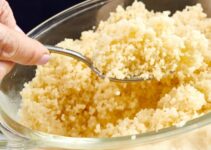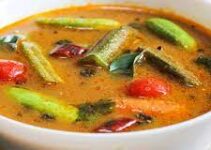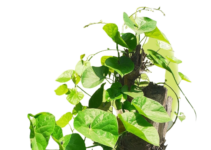Vasaka overview
Vasaka or Adhatoda vasica or Malabar nut is an important Ayurvedic medicinal herb. The entire parts of the plant, from root to leaves, are used to treat many ailments. It is the leaves which are of great importance. The plant effectively treats asthma, bronchitis, tuberculosis, and other disorders. Justicia adhatoda is used as medicine in Ayurveda, Siddha, Homeopathy, Unani, and other ancient system of medicine. This product is endorsed by many doctors worldwide. It is used as an expectorant, antispasmodic, anthelmintic, antiseptic, and bronchodilator.
Common Name of Vasaka
- Latin Name: Adhatoda vasica
- English: Malabar nut
- Persian: Bansa
- Hindi: Vasika
- Assamese: Bahaka
- Bengali: Vasaka
- Gujarati-Alduso, Ardusi
- Kannada-Adusoge
- Malayalam-Atalotakam
- Marathi-Adulsa
- Samkrit-Vasakc
- Tamil-Adadorai, Arathorai
- Telugu-Adasaramu.
- Delhi-Piya-bansa
- Sinhala: Pawatta
- Ronmei: Thimpui
- Sanskrit: Vasaka
- Nepali: Asuro
What is Vasaka / Justicia adhatoda?
Vasaka is an essential medicinal herb where leaves, roots, flowers, and the whole plant are used for many drug formulations. Vasaka is a tall, much-branched, dense, evergreen shrub with large, lance-shaped leaves. Flowers in dense, short spikes; stalks of the ends shorter than leaves. Leaf-like structures, called bracts, are present on the spikes; these are conspicuously veined. The plant is native to India and occurs throughout the plains and in the lower regions of the Himalayas. It is used for many medicinal uses as well as health benefits.
Medicinal uses of Vasaka
The drug Vasaka comprises the fresh or dried leaves of the plant. Leaves contain an alkaloid vasicine and an essential oil. The chief use of Vasaka is as an expectorant; it is given in the form of juice, syrup, or decoction. It softens the thick sputum, facilitates its coming out, and thus brings about quick relief in bronchitis. The expectorant activity is due to the stimulation of bronchial glands.
Chemical composition of Vasaka
The leaves of Vasaka contain phytochemicals such as alkaloids, tannins, saponins, phenolics, and flavonoids. Leaves contain vasicine, a quinazoline alkaloid, and an essential oil. It also has other chemicals such as Luteolin, Tritriacontane, B- Sitosterol, Kaempferol, 3- Sophoroside, Adhatodic acid, q- Hydroxyvasicinine, Vit –C, and vasicol. Vasicinol, Vaicinolone, Adhatodine, Adhavasinone, Anisotine, Carotene, Vasakin, Vasicinone, Vascicolone, Vasicolinone, and many more.
Health benefits of Vasaka
- Vasaka for respiratory problems: It is an effective herb in managing respiratory congestions like cough, bronchitis, asthma, etc. The medicinal herb expands the airways and provides excellent relief to bronchitis patients. It is a well-known ayurvedic medicine for expectorants and helps to ease phlegm.
- Ayurvedic Vasaka for tuberculosis: Vasaka is known for its anti-microbial properties, thereby helpful in fighting tuberculosis. Along with treating tuberculosis, it shows positive impacts on cough and bronchitis.
- Vasaka for arthritis: Vasaka has anti-inflammatory properties. It is suitable for joint pain and helps to subsidise arthritis swelling
- Vasaka to purify blood: The Ayurvedic herb Malabar nut is good for purifying blood. It increases the blood count and also ensures the lowering of blood pressure. If you want to purify your blood, it’s a good bet. It is good for the heart’s health and is a cardiac tonic.
- Vasaka for doshas balancing: It balances pitta and Kapha doshas. It helps to balance Pitta and is good for the health of the liver and gall bladder.
- Vasaka for voice: It helps in clarity of voice.
- Vasaka for fever: It is beneficial in case of thirst, fever, vomiting, sugar, bleeding disorders, and leprosy.
- Malabar nut for skin health: It is good for skin health because of its anti-inflammatory and anti-microbial features.
- Malabar nut eases cramps: It eases abdominal pain by coming down abdominal muscles.
- Vasaka for dyspnea: It cures dyspnea by improving lung function and efficiency.
Side effects of Vasaka
- One should take precautions while eating Vasaka.
- Its medicinal formulations should be taken only after a physician’s consultation.
- Its overdosage may lead to many ill effects.
- Expecting mothers shouldn’t take Vasaka as it heavily impacts the uterus.
- It lowers the blood sugar level; therefore, diabetic patients should care about it.
- Children shouldn’t use it.
Vasaka Dose
- Leaf Juice – 10-20 ml
- Root decoction 40-80 ml
- Flower juice- 10-20 ml
- Leaf dry powder – 1 – 3 grams





It is very useful for my school vocational project
All the best!!!
THANKYOU!!!
Thank you very much
An amazing blog showing how powerful Ayurveda is. Treatment for curing several above mentioned deadly diseases have been discovered recently but had its treatment in Ayurveda from a long time in form of herbs and fruits. One such herb is Vasaka very important herb for the treatment of bronchitis and tuberculosis.
I read in class 11 and I have got a biology project based on medicinal plants….I really get a great help from this information…….Now my project is completed perfectly…..For this help I hope that I will get full marks in the project…Thank you so much
Thanks for helping me in my biology project……
Thank you very much ………
very nice piece. If dosage is given that will by more nice.
How long does it take for Vasaka leaf powder to start working for Asthma and related ailments?